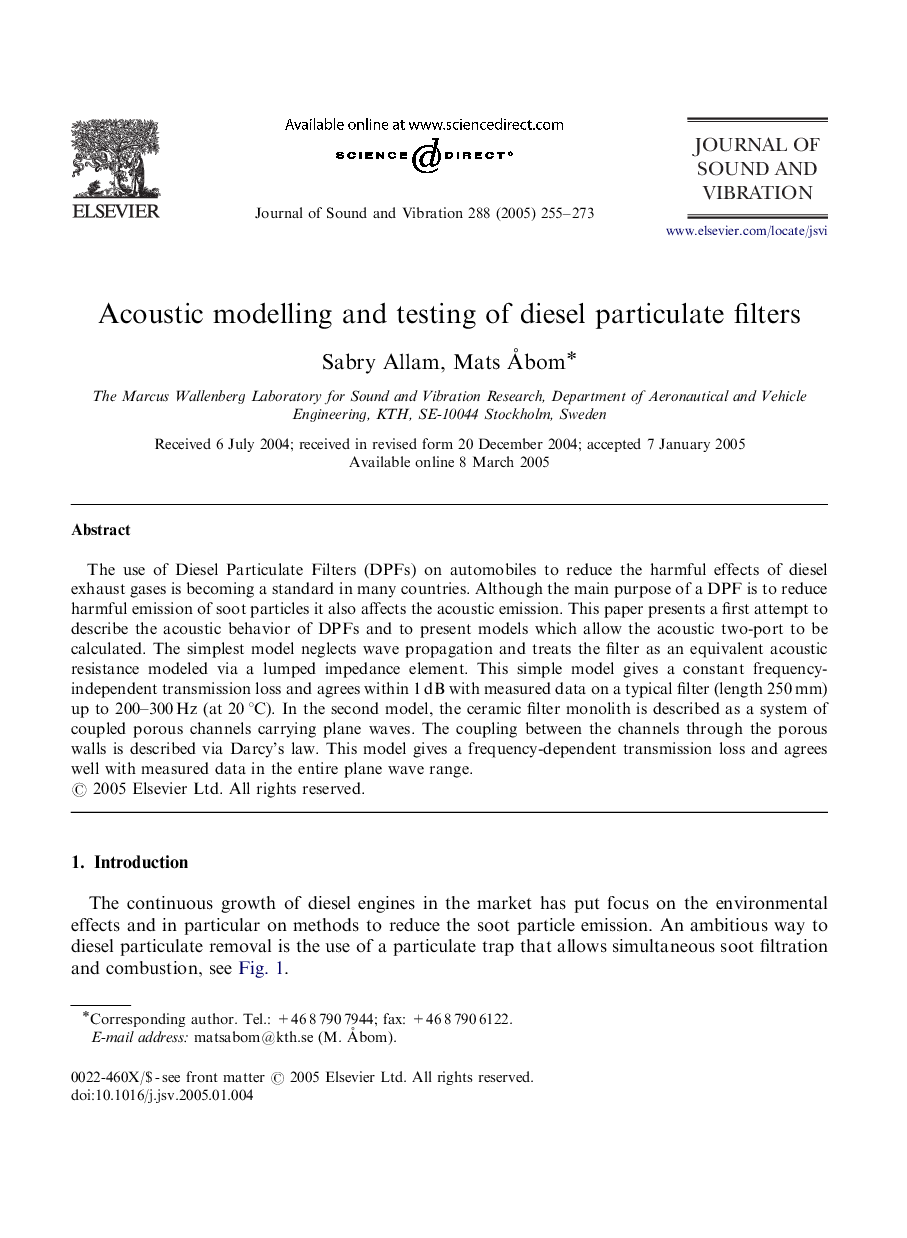| Article ID | Journal | Published Year | Pages | File Type |
|---|---|---|---|---|
| 9640281 | Journal of Sound and Vibration | 2005 | 19 Pages |
Abstract
The use of Diesel Particulate Filters (DPFs) on automobiles to reduce the harmful effects of diesel exhaust gases is becoming a standard in many countries. Although the main purpose of a DPF is to reduce harmful emission of soot particles it also affects the acoustic emission. This paper presents a first attempt to describe the acoustic behavior of DPFs and to present models which allow the acoustic two-port to be calculated. The simplest model neglects wave propagation and treats the filter as an equivalent acoustic resistance modeled via a lumped impedance element. This simple model gives a constant frequency-independent transmission loss and agrees within 1 dB with measured data on a typical filter (length 250 mm) up to 200-300 Hz (at 20 °C). In the second model, the ceramic filter monolith is described as a system of coupled porous channels carrying plane waves. The coupling between the channels through the porous walls is described via Darcy's law. This model gives a frequency-dependent transmission loss and agrees well with measured data in the entire plane wave range.
Related Topics
Physical Sciences and Engineering
Engineering
Civil and Structural Engineering
Authors
Sabry Allam, Mats Ã
bom,
